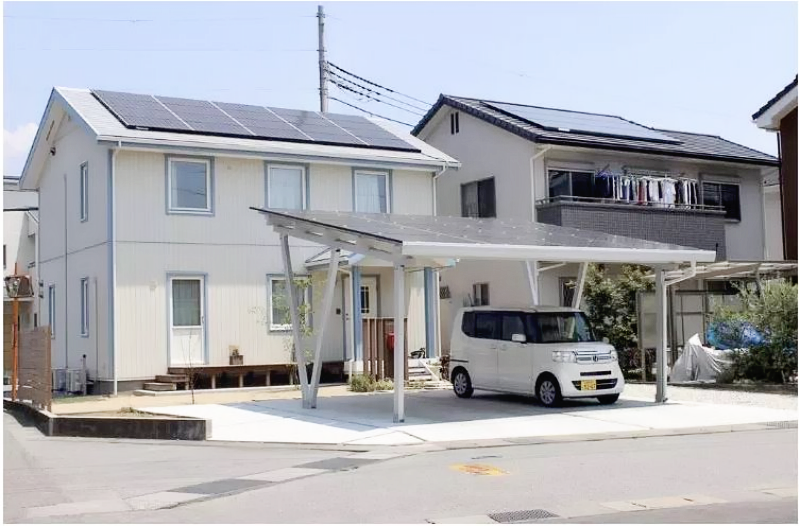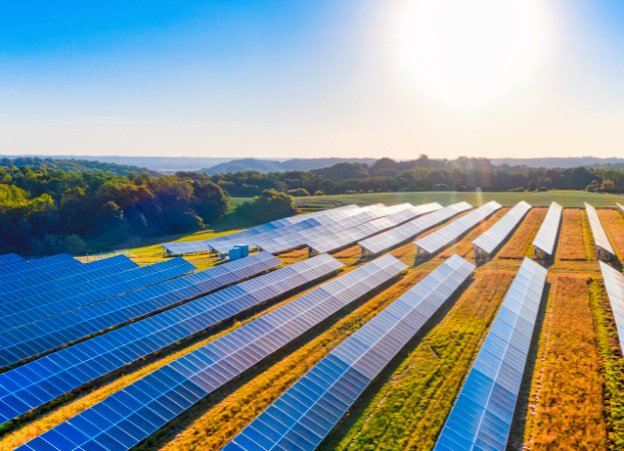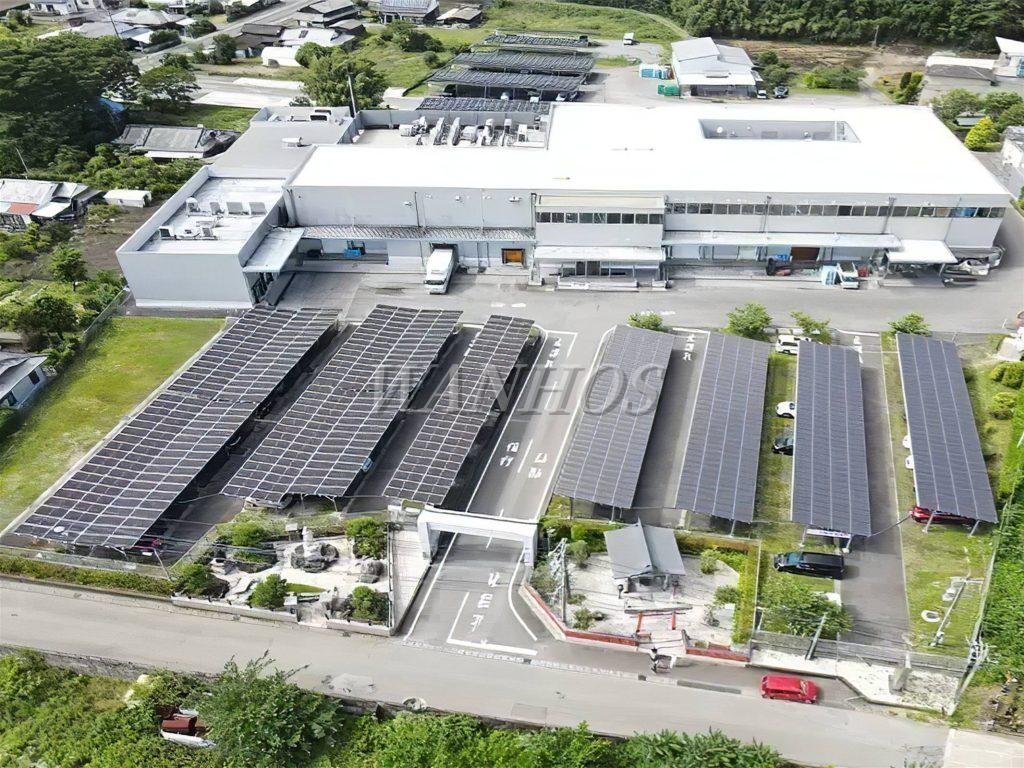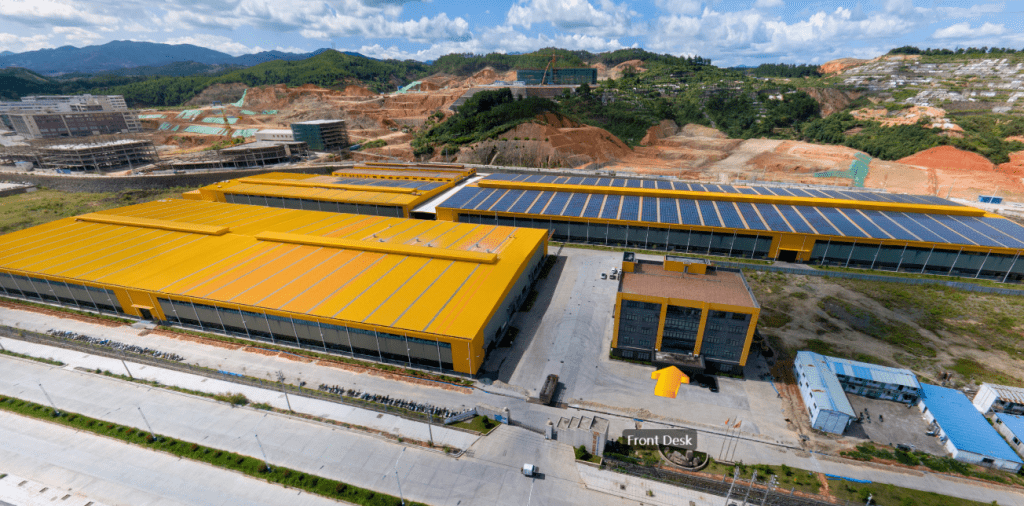Address
304 North Cardinal
St. Dorchester Center, MA 02124
Work Hours
Monday to Friday: 7AM - 7PM
Weekend: 10AM - 5PM
Address
304 North Cardinal
St. Dorchester Center, MA 02124
Work Hours
Monday to Friday: 7AM - 7PM
Weekend: 10AM - 5PM

Solar PV Racking System is a solar photovoltaic power generation system to place, install, and fix solar panels designed with special brackets. General materials are aluminum alloy, carbon steel, and stainless steel.
Solar support system-related products made of carbon steel and stainless steel, carbon steel surface to do hot-dip galvanized treatment, outdoor use for 30 years without rust. The solar photovoltaic support system is characterized by no welding, no drilling, 100% adjustable, and 100% reusable.

The worldwide energy crisis has contributed to the rapid development of new energy industries, and solar energy is the most important basic energy source among all kinds of renewable energy sources; therefore, the solar power generation technology, i.e., photovoltaic industry, which converts solar radiation energy into electricity, is developing rapidly; the old concept of the photovoltaic industry mainly includes the production chain of solar modules, the production chain of electrical control components such as controllers and inverters, etc. The advantages of solar support systems are far more than just production and installation.
The advantages of solar support systems in the application of solar panel support go far beyond simple production and installation. Solar panels can also be flexibly moved according to the sun’s rays and the seasons. Just as when they were first installed, each solar panel’s beveled surface can be adjusted to accommodate the different angles of light by moving the fasteners, and the solar panels can be secured exactly in their designated positions by fastening them again.
Installation location: Building roof or curtain wall and ground level
Installation Orientation: South orientation is preferred (except for tracking systems)
Mounting Angle: Equal to or close to the latitude of the installation site.
Load requirements: wind load, snow load, earthquake requirements
Arrangement and spacing: in conjunction with local sunlight conditions
Quality requirements: 10 years of rust, 20 years of steel does not reduce, and 25 years still have a certain degree of structural stability.

To make the whole photovoltaic power generation system get the maximum power output, combined with the construction site of geography, climate, and solar energy resource conditions, the solar modules in a certain direction, arrangement, and spacing of the fixed support structure, usually steel and aluminum alloy structure, or a mixture of both.
One of the most important features of any type of solar PV racking design solution for module assembly components is weather resistance. The structure must be strong and reliable, able to withstand, for example, atmospheric erosion, wind loads, and other external effects. Safe and reliable installation, maximum performance with minimum installation costs, and virtually maintenance-free and reliable repairs are all important factors to consider when selecting a solution. Highly wear-resistant materials are used in the solution to resist wind and snow loads and other corrosive effects. A combination of aluminum anodizing, extra-thick hot-dip galvanizing, stainless steel, and UV aging-resistant technologies are used to ensure the longevity of the solar racking and solar tracking.
The maximum wind resistance of the solar bracket is 216km/hour, and the maximum wind resistance of the solar tracking bracket is 150km/hour (greater than a class 13 typhoon). The new solar module racking system represented by solar single-axis tracking bracket and solar dual-axis tracking bracket can greatly improve the power generation of solar modules compared with the traditional fixed bracket (the number of solar panels is the same), the power generation of the module with solar single-axis tracking bracket can be increased by 25%, and solar dual-axis bracket can even be increased by 40% to 60%.
Photovoltaic systems for sloped roofs
Depending on the substructure of the sloped roof, unique accessories developed specifically for sloped roof photovoltaic systems will be offered to meet your requirements.
Pitch roof PV system bracket features:
§ Suitable for different thicknesses of tile roofs adjustable height accessories to meet customer applications flexibly
§ Flexible and effective adjustment of the bracket position with multiple holes in the connecting plate and other accessories.
§ No damage to the roof waterproofing system
Flat roof photovoltaic system
Common flat roofing forms are concrete flat roofing, color steel plate flat roofing, steel structure flat roofing, ball node roofing, and so on.
Flat roof photovoltaic system bracket features:
§ Large-scale neatly laid
§ A variety of solid and reliable connection methods with the foundation
§ Unique accessories can be developed according to the different needs of customers to meet the requirements.
Large-scale ground-mounted photovoltaic systems
Commonly, large-scale ground-mounted photovoltaic systems are generally based on concrete strip (block) foundations (special foundation conditions require consultation with specialized geotechnical designers).
Features of large-scale ground-mounted photovoltaic system bracket:
§ Fast installation to match the construction progress of large-scale ground-mounted photovoltaic system power plants
§ Flexible and changeable adjustment form to meet the complex and changeable requirements of the construction site
§ Streamline the number of accessories to facilitate field workers to identify the installation
Pillar Solar Racking
To meet the installation requirements of large-size battery modules that can be used in areas with high wind speeds, a ground reinforcement structure is designed. The racking system can adjust the horizontal angle as needed, and when installing the system, no on-site welding is required, it can be fully installed by placing the bolts among the corresponding bolt holes by the assembly drawings provided by us. Main features: module area 12.8 square meters; completely maintenance-free; high reliability, long service life; power up to 1.6 kW; no need to move, the system is fixed; wind resistance ≥ 200 km/h; reasonable price.
ACCESSORIES
Development of various accessories
I. Roof component series accessories.
B. Battery component clip series.
T-screws and other fasteners series.
Four, all kinds of customized stamping parts.
Equipment Composition
The whole production line combines the leveling, feeding/punching, molding, cutting, and other technologies in one production equipment.
The whole production line consists of a feeding system, punching system, molding system, cutting system, electric control system, and other parts.
The structure of the PV mount must be strong and reliable, able to withstand e.g. atmospheric erosion, wind loads, and other external effects. It should have a safe and reliable installation, be able to achieve maximum use with minimum installation costs, be virtually maintenance-free, and have reliable repairs. A good bracket needs to consider the following factors:
(1) The strength of the material shall resist climatic factors for at least thirty years.
(2) It should be unaffected by extreme weather such as snowstorms or typhoons.
(3) The bracket needs to be designed with slotted rails to hold electrical wires to prevent electric shocks.
(4) Electrical equipment must be installed in a location that is not exposed to the environment and is easily accessible for regular maintenance.
(5) It must be easy to install.
(6) The cost must be reasonable.
A quality bracket system must have its design verified using computerized software that simulates extreme weather conditions and undergo rigorous mechanical testing, such as tensile and yield strength, to ensure product durability.
Currently commonly used solar photovoltaic brackets from the material points, there are mainly three kinds of concrete brackets, steel brackets, and aluminum alloy brackets.
Concrete stent is mainly used in large-scale photovoltaic power stations, because of its self-importance, can only be placed in the field, and the foundation of the better areas, but high stability, can support the huge size of the panel.
Aluminum alloy stents are generally used in civil buildings on the roof for solar energy applications, aluminum alloy has corrosion resistance, light weight, beauty, and durability, but its self-bearing capacity is low, and can not be applied to solar power station projects. In addition, the price of aluminum alloy is slightly higher than steel after hot-dip galvanizing.
Steel bracket has stable performance, mature manufacturing process, high bearing capacity, and easy installation, which is widely used in civil and industrial solar PV and solar power stations. Among them, the steel profiles are all factory-produced with uniform specifications, stable performance, excellent anti-corrosion performance, and beautiful appearance. It is worth mentioning that the combined steel bracket system, its on-site installation, only needs to use specially designed connectors to channel steel assembled, construction speed, without welding, thus ensuring the integrity of the anti-corrosion layer. The disadvantage of this product is that the connector process is complex, has a wide range of types, high requirements for manufacturing and design, so the price is not expensive.

Xiamen Wanhos Solar Tech Co., Ltd. is registered as a national high-tech enterprise with independent intellectual property rights. It has an annual production capacity of 3 GW. The company is headquartered in Xiamen, a beautiful coastal city in China and has offices in Hong Kong S.A.R., Australia, Malaysia, Japan, South Korea, Vietnam and other countries.The company has obtained nearly 100 utility model patents, the products are also approved AS/NZS 1170,TUV, UL, CE, CPP, and ISO 9001 quality management system and other international authorized certification.Products are widely exported to more than 100 countries and regions, Japan, Korea, Southeast Asia, Europe, Australia, America and others.